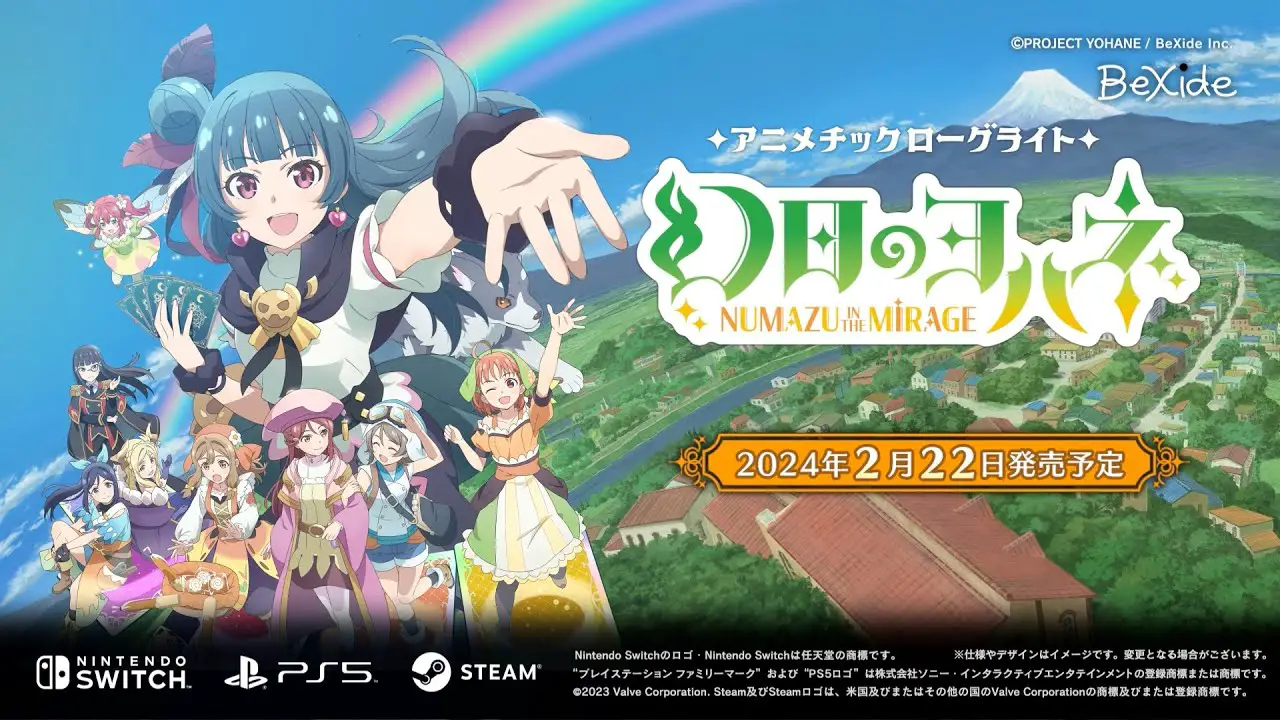Yohane the Parhelion – NUMAZU in the MIRAGE – Released on February 22nd, 2024. Based on the global hit anime series “Love Live! Sunshine!!”. BeXide Inc. developed it for PC (Steam), Nintendo Switch And PS5.
Story
Yohane the Parhelion – Numazu in the Mirage begins in the small seaside town of Numazu, where Yohane, a well-meaning but somewhat incompetent fortune teller, struggles with her craft. Despite her good intentions, her lackluster skills usually leave her failing more often than she succeeds. But everything changes one fateful day when Yohane stumbles across a mysterious mirror that takes her fortune-telling game to another level — or so she thinks.
Unbeknownst to her, the mirror is no ordinary object. When one of her friends falls ill, Yohane soon finds herself sucked into the mirror, transported to a twisted version of her beloved town. Here, everything is in reverse, complete with evil doppelgängers of her friends, known as the ‘Nightwicked.’ These shadowy versions are draining the life energy of their real-world counterparts, and it’s up to Yohane to save them.
This simple yet charming narrative forms the backbone of the game. It’s easy to get attached to Yohane and her friends as they interact in a friendly, wholesome way. For those familiar with the anime on which the game is based, the characters feel fleshed out, as the spinoff builds upon existing relationships, giving the game’s narrative a sense of depth.
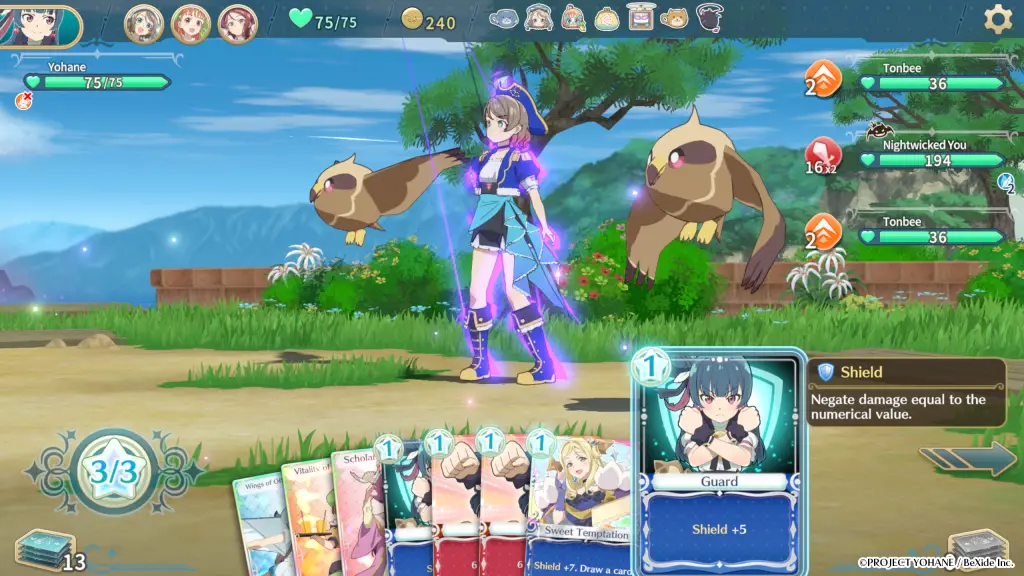
However, Yohane’s energetic and sometimes over-the-top screeching can grate on the ears of players who aren’t already fans of anime’s more excitable side. If you can push through that, the story of friendship, hope, and overcoming darkness unfolds in an engaging way.
core mechanic
At its heart, Yohane the Parhelion is a rogue-lite deckbuilder. For those unfamiliar with the genre, here’s a quick breakdown: you begin with a basic deck of cards, representing different abilities, attacks, and defenses. As you progress through the game, you’ll encounter enemies, events, shops, and treasures that help expand and shape your deck.
Battles are turn-based and tactical, with the primary challenge being managing your deck and energy resources best. The game’s telegraphing enemy moves allows you to see what an opponent is planning and adds an extra layer of strategy. Players must balance offensive and defensive moves, trying to outwit their foes with precise attacks while simultaneously protecting themselves.
The true joy in Yohane the Parhelion lies in its card synergy system. The game’s 100+ cards allow for many different playstyles, from straightforward attacking decks to more complex strategies that revolve around discarding cards or playing in specific sequences. I found a lot of satisfaction in experimenting with discard decks, which rewarded me with bonuses for removing cards from my hand. At one point, I found a setup that allowed me to chain together devastating attacks, leaving enemies scrambling to recover.
Of course, deck management is key in this game. Adding too many cards can dilute your strategy, making it harder to pull off powerful combos. Learning when to decline a card reward is just as important as selecting the right one. You’ll also want to keep an eye out for charms – permanent passive upgrades that can dramatically turn the tide of battle in your favor. These range from healing bonuses to shields, offering a little extra help when facing down tougher enemies.
The helper system is another standout feature. Summoning one of Yohane’s friends to assist you with buffs and attacks during a battle is a game-changer, especially during difficult encounters. These helpers don’t appear often, so using them wisely is crucial.
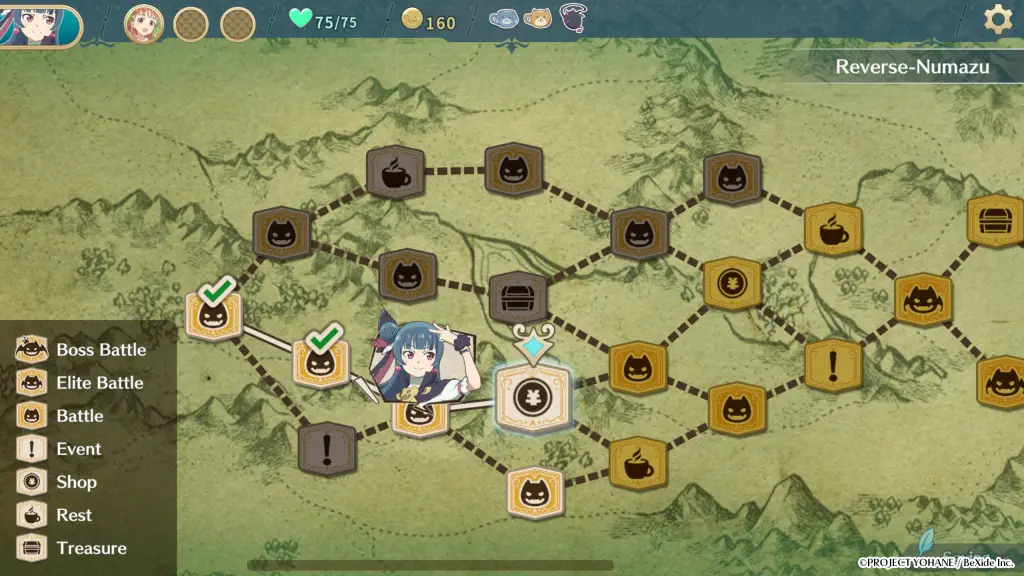
The game’s core mechanic is about choosing a strategic path on a branching map, with each point offering unique challenges and opportunities that can drastically alter your run. As you move through the map, you’ll encounter different types of nodes. Some will have you battling regular enemies, while others pit you against stronger elite foes who, though more difficult, offer greater rewards. At the end of each map lies a boss fight, testing everything you’ve built up to that point.
Beyond battles, the game encourages exploration. You can visit shops where you’ll purchase new cards and relics to strengthen your deck and enhance your abilities. There are also Event Points, which introduce an element of risk and reward, allowing players to take gambles for powerful bonuses or, if luck isn’t on their side, suffer damage or other penalties.
To balance out the risks, Rest Stops offers a chance to heal your character or upgrade one of your cards, preparing you for tougher encounters ahead. Finally, Treasure Points provide the opportunity to acquire powerful new cards or relics that can give you a crucial edge in combat, turning the tide of battle in your favor. Every step forward is a decision that can make or break your run, blending strategy and risk management with every choice you make.
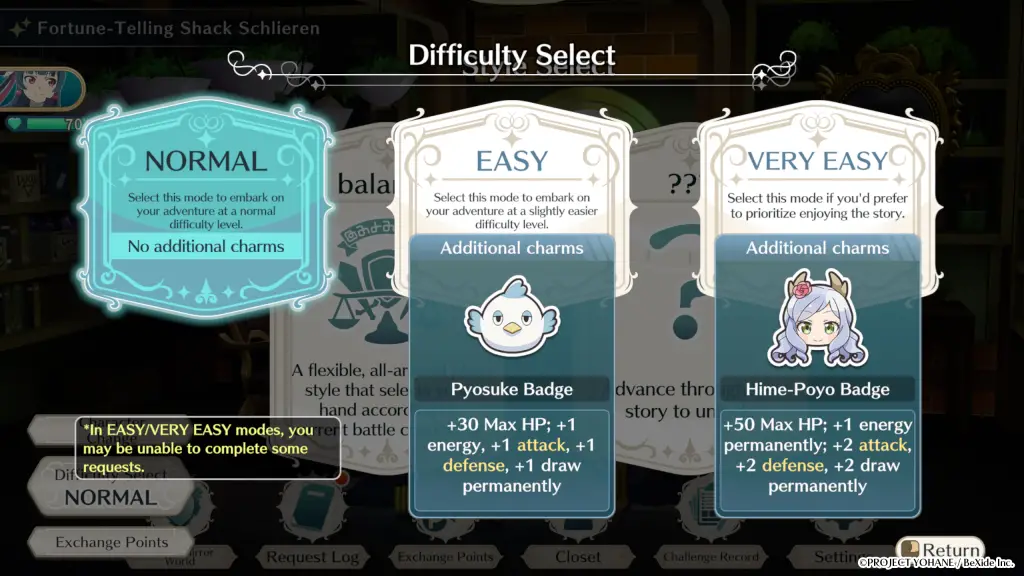
Newcomer-Friendly Progression
While many rogue-lites are known for their punishing difficulty, Yohane the Parhelion offers a much more forgiving experience. Instead of sending you back to the start upon failure, the game is divided into chapters. Each chapter centers around rescuing a specific character, and failing will simply put you back at the start of that chapter. It’s a system designed to welcome newcomers to the genre without overwhelming them. If you do fail, you can even use currency earned during your run to purchase buffs that will help you on your next attempt.
Veteran players may find this forgiving nature a little too lenient. After a few hours of play, I found myself breezing through many of the game’s challenges, particularly after I had gotten familiar with the cards and mechanics. While the game does get trickier during the post-game, where it adopts a more traditional rogue-lite structure, players looking for a tough-as-nails challenge might not find it here.
However, this more laid-back approach is refreshing in a genre that often prides itself on difficulty. Sometimes, you just want to relax with a strategic card game without constantly fearing defeat, and Yohane the Parhelion offers exactly that. It’s a game you can unwind with, taking your time to experiment with different strategies without feeling like the game is punishing you for every mistake.
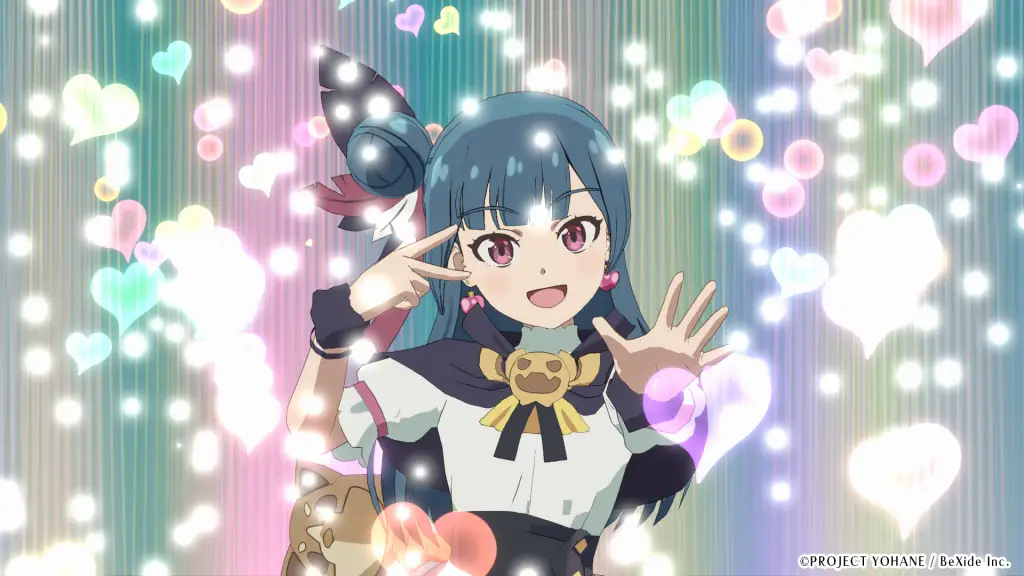
Presentation and Visuals
The visual presentation truly sets Yohane the Parhelion apart from other rogue-lite deck builders.
The game doesn’t revolutionize the genre with its narrative, but how it’s all presented is breathtaking.
The in-game cutscenes follow a familiar format for anime-inspired games: static backgrounds with fully animated characters overlaid on top. Though this is somewhat typical for the genre, there’s something undeniably captivating about the characters’ designs and animations, making them a joy to watch.
Where the game really shines, however, is in its battle visuals. Each character, card, and enemy is vibrant, sharp, and beautifully animated. The environments, while not incredibly diverse, are colorful and rich enough to keep players interested in progressing through each chapter. The game’s card artwork is another highlight, with each card feeling like a mini-work of art. From magical attacks to strategic defensive plays, everything pops with vibrant color, keeping your eyes locked on the screen.

That being said, the lack of distinct variety between areas could become a minor gripe. There are different zones to explore, but they often feel similar in layout and aesthetic. But considering how well the visuals are designed, the repetitive nature of the environments becomes less of a concern as you delve deeper into the game.
Soundtrack
No review of an anime-based game would be complete without a mention of the sound and music. The soundtrack is a delightful mix of upbeat tunes and more dramatic pieces that perfectly fit the game’s mood. Each track complements the gameplay well, ramping up the excitement during battles while offering more relaxed melodies as you navigate through the town of Numazu.
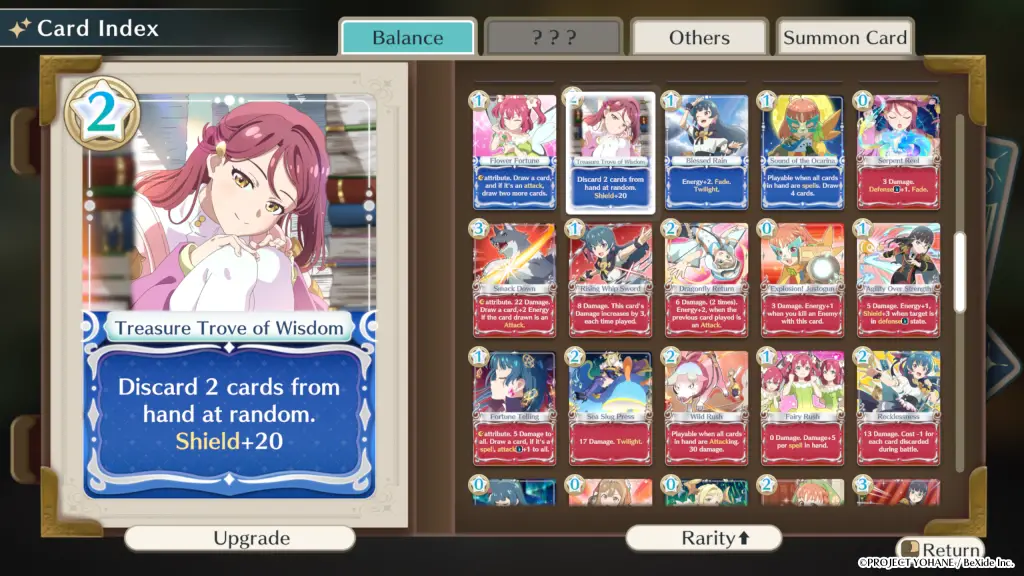
However, as mentioned earlier, Yohane’s voice acting can be an acquired taste. Her high-pitched screeches during certain cutscenes may have some players scrambling for the mute button, but if you’re used to anime voice acting, it’s likely something you’ll be able to tolerate.
Final Thoughts
Yohane the Parhelion – Numazu in the Mirage – is a surprise gem in the world of rogue-lite deckbuilders. While it doesn’t push the genre’s boundaries in terms of mechanics, its charming story, stunning visuals, and forgiving structure make it a standout experience. For fans of the anime, it’s a chance to see their favorite characters in a new light, while for deckbuilder enthusiasts, it offers a relaxing but still tactical experience.
Though it may lack the intense difficulty some veterans of the genre may seek, its accessibility and depth of strategy make it a game worth playing. If you’re looking for a deck builder that allows you to experiment, strategize, and chill out without too much frustration.
Anyone who gives it a try is in for a real treat. It’s a super charming take on a growing genre that BeXide is getting good at. With the passion they put into their games, I think it won’t be long before they’re working on big-name franchises you already know.”

